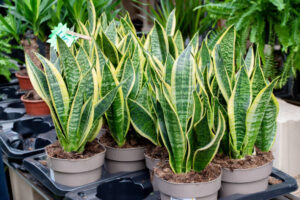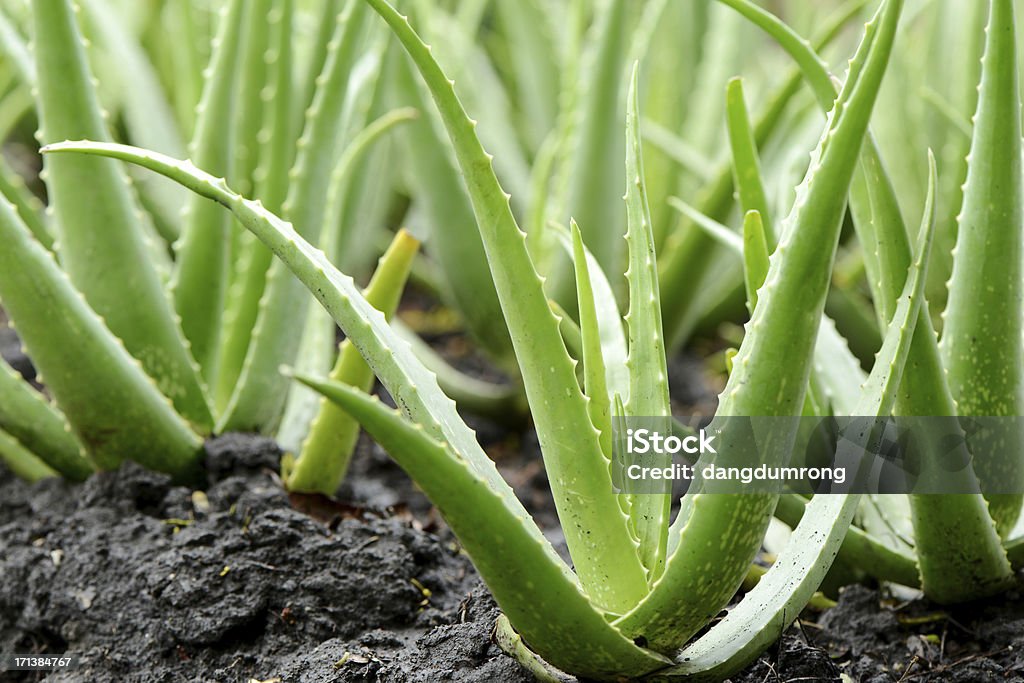Introduction
Discover the benefits of Indoor Plants for Air Purification. Learn how they improve air quality, reduce toxins, and create a healthier living environment and Transform your home with indoor plants not only for show, but also as natural air purifiers that can purify the air of your home, letting this space come alive with nature.This blog will discuss how indoor plants purify the air, their benefits, and ways to help you keep them thriving in this indoor endeavor.
Best Indoor Plants for Air Purification: A Wealth of Knowledge and Ideas
This blog is designed to provide you with the best knowledge about indoor plants and their air-purifying benefits. It also offers insights into the top indoor plants known for improving air quality, making it easier for you to choose the perfect plants for your home or workspace. Explore how these plants can enhance your health, well-being, and connection with nature while keeping your indoor environment clean and refreshing.
Indoor air is often contaminated by various factors such as the exhalations of people living in the house, household products, furniture, and outdoor air. One key finding from NASA’s Clean Air Study is that some plants can filter toxins like benzene, formaldehyde, and trichloroethylene. Beyond purifying the air, the indoor plants also help:
- Increase humidity to prevent dry skin and respiratory problems
- Reduce stress and enhance mental well-being
- Make your home aesthetically appealing.
Read more about NASA’s research on indoor air quality
The Best Indoor Plants for Air Purification: Nature’s Powerful Air Filters
Snake Plant (Sansevieria or Dracaena trifasciata)
Sansevieria or Dracaena trifasciata , is popularly known as the snake plant and is considered an air-purifying plant. It is one of the best indoor plants for air purification.
Filters toxins: Snake plants are known to effectively remove harmful toxins such as:
- Benzene
- Formaldehyde
- Trichloroethylene
- Xylene
- Toluene

Provides Oxygen at Night: Unlike most plants that release oxygen during the day, the snake plant uses CAM (Crassulacean Acid Metabolism) to release oxygen at night, making it especially well-suited for bedrooms.
Decreases CO2 Levels: Indoor CO2 levels are reduced, contributing to fresher air.
Peace lily (Spathiphyllum)
Spathiphyllum is another highly acclaimed houseplant for its purifying capabilities. Besides, it is pretty enough to have eye-catching white flowers and lush green leaves that can serve functional purposes.
-
- Most common pollutants in indoor air, which are removed as efficiently as possible by peace lilies, include:
- Benzene is present in plastics, resins, and synthetic fibers.
- Formaldehyde is present in many household items, such as furniture, cleaning products, and paints.
- Trichloroethylene is found in many industrial solvents and adhesives.
-
- Xylene and toluene are contained in many paints, thinners, and adhesives.
- Most common pollutants in indoor air, which are removed as efficiently as possible by peace lilies, include:

spathiphyllum
Benefits of Peace Lily for Indoor Plants for Air Purification:
Reduces Molds:The peace lily absorbs the excess moisture and reduces the airborne mold spores; hence it is very fit for bathrooms and “wet” spaces.
Improves Indoor Humidity:In their natural environment, they emit water vapor, which they could naturally enhance the humidity of the air and thus relieve some dryness that can cause problems like dry skin or respiratory discomfort.
Improves Oxygen Content:Peace lilies do their bit to oxygen creation, thereby improving indoor air quality and making the room feel fresh.
Areca Palm
The Areca palm, also known as Dypsis lutescens, butterfly palm, or bamboo palm, is yet another superb air-purifier. Its feathery and lush fronds do not only beautify indoor spaces with its tropical scenery but also greatly improve the quality of air.

Benefits of Areca Palm for Indoor Plants for Air Purification:
- Benzene
- Formaldehyde
- Carbon monoxide
- Xylene.
Natural Humidifier:The amount of moisture that areca palms release is massive compared to other houseplants, thus making it
really great for humidifying purposes. This becomes particularly relevant in wintertime or in dry locales when indoor air is extremely dry.
Improves the Concentration of Oxygen within an Area: Peripherally observed, the Areca palm enhances respiratory health and improves the quality of air due to its rich contributions in production.
Dust and Particulates Cleaner: The broad-ranged fronds act by trapping the dust and particulates to provide a clean environment.
Additional advantages:
-
- Stress Relief: Having Areca palms would provide a calm environment, lessen stress, and improve psychological health.
-
- Aesthetic Appreciation: Tropic stature of these palms delivers a cool style with elegance to a home and office.
Spider Plant (Chlorophytum comosum)
Chlorophytum comosum an extraordinary indoor plant for air-purification properties. Well- known for its living under low care and improving the indoor air environment, here is one into its air cleaning effectiveness.
Purifies Common Toxins: Spider plants are particularly noted for their entire efficacy in absorption when it comes to indoor air pollutants, including:
-
- Carbon monoxide (CO)
-
- Formaldehyde
-
- Benzene
-
- Xylene
-
- These are the household toxins, otherwise known as the everyday pollutants from furniture, paints,cleaning products, and glues.

Increases Humidity:It can add moisture content to the least humid areas in a house by adding humidity indoors.
Aloe Vera
Aloe Vera, scientifically known as Aloe barbadensis miller, is a plant commonly used for skin remedies and care applications. However, it also serves as one of the best Indoor Plants for Air Purification. Here is what it can do for purifying the air:

Detoxifies: Aloe vera will absorb all the harmful pollutant forms in an environment, for example, formaldehyde and benzene, usually found in cleaning agents, paints, or synthetic material.
Cleans Air: Aloe vera can purify air polluted indoors, especially in confined spaces like bedrooms or offices.
Oxygen Liberator at Night: Just like the snake plant, aloe vera also performs crassulacean acid metabolism (CAM)-an activity releases oxygen during the night time. Therefore, it is all the more recommended in the bedroom area for a better air quality and sleep.
Carbon Dioxide Absorber: Aloe Vera is a very cool CO2 absorber and makes your indoor area fresher plus airier.
Other Benefits:
Humidity Control: it contributes to the indoor humidity maintenance as far as indoor conditioning is concerned. This is more helpful during dry climatic conditions.
Allergy-Free: Aloe vera also keeps away pollen and scent, unlike some plants. Thus, it really is allergy-friendly.
Boston Fern
The Boston Fern (Nephrolepis exaltata) is an attractive indoor plant of air-purification with feathery fronds, known for its potential as an air purifier.This is a brief account of its air-purifying potentials:

Removal of Harmful Toxins: The Boston fern is one of the best air plants because it removes Formaldehyde often found in furniture, carpets, and most cleaning products.
-
- Xylene and Toluene: commonly found in paints, glues, and industrial products
Increases Humidity: It increases humidity in the air, as it exhales moisture through its fronds. Thus, they are really good at making a dry environment, especially in winter or in air- conditioned areas.
Diminishes Indoor Air Pollutants: The plant aids air purification by receiving airborne pollutants and discharging fresh oxygen.
Dust Reduction: Dust particles are trapped by the dense foliage and prevented from spreading in your home.
Rubber plant
The rubber plant (Ficus elastica) is a favorite houseplant for many people due to its beautiful foliage and its function as an indoor air purifier. This is how it contributes to the improvement of indoor air quality:
Dyes Harmful Toxins: The rubber plant is effective in absorbing toxins such as Formaldehyde Commonly found in furniture, glues and cleaning products.
Carbon monoxide: It is particularly useful in cities or poorly ventilated areas.
Increases Humidity: The large glossy leaves transpire water vapor, thereby increasing humidity in indoor environments. Issues that can improve include dry skin and respiration problems as well as static electricity.

Absorbs Carbon Dioxide: All plants photosynthesize, converting CO2 into oxygen. Like all plants, the rubber plant also absorbs CO2 from the air and releases oxygen during photosynthesis; it converts carbon dioxide into oxygen.
Dust Collector: Broad leaves trap several dust particles and do not allow them to float in air. It is much more effective when the leaves are wiped regularly.
Here are some additional benefits of indoor plants for air purification.
Improved Health Benefits
- Reduces Allergies: Many indoor plants are known to effectively reduce airborne particles and allergens, improving air quality for those with respiratory issues.
- Better Breathing: Indoor plants produce oxygen and lower carbon dioxide levels, contributing to cleaner air indoors.
- Enhanced Immune System: Breathing in clean, toxin-free air helps strengthen the immune Boosts Mental Health and Productivity
- Stress Reduction: Research indicates that by being present, greenery lowers the stress and anxiety levels.
- Increases Focus: University of Exeter research concluded that working with plants in office environments can boost productivity up to 15%.
- Improves Mood: The relaxing effects have been known for plants such as lavender and jasmine, which can increase global happiness.
A Natural Humidifier Plants release water into the air through a process called transpiration, which helps combat dry air. This can prevent skin dryness, sore throats, and respirator discomfort, while also reducing static electricity in dry climates.
Eco-Friendly Decoration
- Aesthetic Appeal: Plants offer a chic and sustainable method to enhance the beauty of any environment.
Better Sleep
Some indoor plants for air purification, such as lavender and snake plants, positively impact sleep quality by:
- Releasing oxygen at night.
- Reducing stress and promoting relaxation.
Energy Efficiency
- Plants naturally cool the surrounding air, helping to reduce reliance on air conditioners during warm weather.
Educates Children
Educates Children about indoor plants for air purification gives children a sense of ecosystem, responsibility, and value of green living.
Noise Reduction
Noise Reduction Plants can screen, absorb, or scatter ambient noise, particularly in the urban or noisy indoor setting.
Builds a connection with nature
- Caring for indoor plants fosters a sense of connection with nature, providing therapeutic benefits, especially in urban living.
Here are some suggestions for successful indoor plants for air purification:
Find the Right Place: Place plants where they should receive light, whether direct, indirect, or low, according to the varied types of plants.
Water Appropriately: This is important, because plants suffer more by over-watering than by under-watering. Before using water check the soil moisture number.
Wipe Down the Leaves: Dust can block sunlight from the plant and reduce its efficiency for air purification. Leaves should be wiped down with a damp cloth regularly.
Fertilize it Periodically: Make use of a well-balanced fertilizer for optimum growth of plants.
Humidity: Some plants like ferns do well with higher humidity. For moisture, the water may be from a humidifier or from misting.
Conclusion
Indoor plants for air purification are a simple and effective way to improve air quality and bring calmness to the home. Regardless of plant size or type, whether you enjoy plants or not, adding a small plant like a snake or spider plant can offer health benefits indoors.
Which is your favorite Indoor plants for air purification? Feel free to share in the comments below!
REFERENCES
-
- National Aeronautics and Space Administration. 1974. Proceedings of the Skylab Life Sciences Symposium, August 27-29, 1974. NASA TM-X-58154. Johnson Space Center. 161-68.
-
- Gammage, R.B. and S.V. Kaye, eds. 1984. Indoor Air and Human Health. Proceedings of the Seventh Life Sciences Symposium, October 29-31, 1984. Chelsea, Mich.: Lewis Publishers, Inc.
-
- Walsh, C., S. Dudney, and E.D. Copenhauer. 1984. Indoor Air Quality. Boca Raton, Fla.: CRC Press, Inc.
-
- Wallace, L., S. Brombert, E. Pellizzari, T. Hartwell, H. Zelon, and L. Sheldon. 1984. Plan and preliminary results of the U.S. Environmental Protection Agency’s indoor air monitoring program (1982). In IndoorAir. Stockholm: Swedish Council for Building Research. 1:173-78.
-
- Pellizzari, E.D., M.D. Erickson, M.T. Giguere, T. Hartwell, S.R. Williams, C.M. Sparacino, H. Zelon, and R.D. Waddell. 1980. Preliminary Study of Toxic Chemicals in Environmental Human Samples: Work Plan, vols. 1 and 2, Phase I. Washington: U.S. EPA.
-
- B C Wolverton, WLDouglas, K Bounds-1989- ntrs.nasa.gov.
-
- DS Yang, SVPennisi, K C Son, S J Kays-Hort science,2009
-
- K Dijkstra, M E Pieterse, APruyn- Preventive medicine,2008,vol 47,issue 3
-
- ntrs.nasa.gov
-
- N Bruce, ERehfuess, SMehta, G Hutton, K Smith-2006- ncbi.nlm.nih.gov
-
- LClaudio- Environmental health perspectives,2011- ncbi.nlm.nih.gov


1 thought on “Indoor Plants for Air Purification: Nature’s Air Filters”